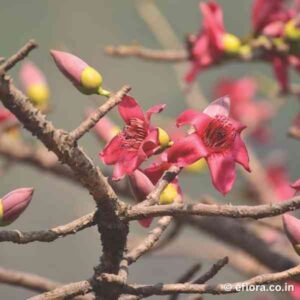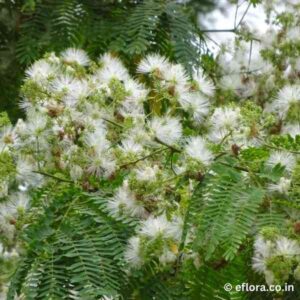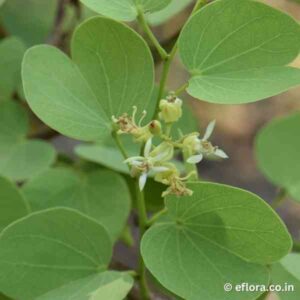Adenanthera pavonina (Red wood)
A fast growing tree with spreading crown, can attain a height up to 20 m. Leaves bipinnate, up to 30 cm long; pinnae 3-6 pairs, opposite; leaflets alternate, 4-8 pairs, elliptic-oblong, up to 3.8 cm long, dark green above, glaucous beneath. Inflorescence an axillary raceme or a terminal panicle. Flowers pale-yellow, ca. 5 mm in across. Pod flat, falcately curved, up to 23 cm long and 2 cm in width; valves spirally twisted after dehiscence. Seeds smooth, compressed, shining, brilliant scarlet, ca. 8 mm in diam.
Etymology: The genus name “Adenanthera” comes from the Greek words adene (gland) and anthera (anther), likely referring to the glandular-tipped anthers. The specific epithet “pavonina” is derived from the Latin word pavoninus, means of peacock this likely refers to its ornamental seeds resembling peacock eyes.








